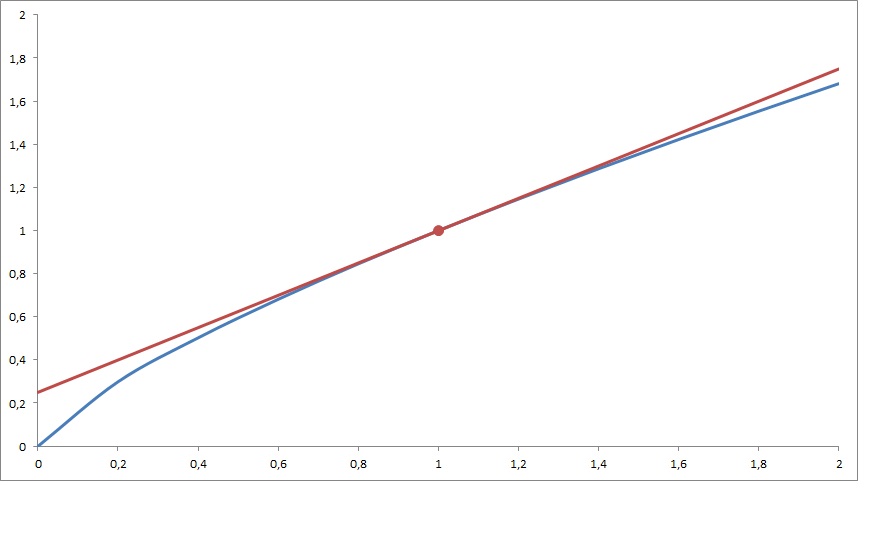How do you find the linearization of #f(x)=x^(3/4)# at x=1?
1 Answer
I found:
Explanation:
Here we need to locally substitute the actual curve of our function with the line tangent to our curve at point of coordinate
Basically instead of considering the real curve we substitute it with a straight line (the tangent). This works locally, i.e., in a very small interval around our point so we must be careful not to overdo it!
We will need the equation of the line in the general form:
where:
In our case we have:
substituting into our function we see that:
Now we need the slope
evaluated at
Now we use:
or
Graphically:

You can see that around

